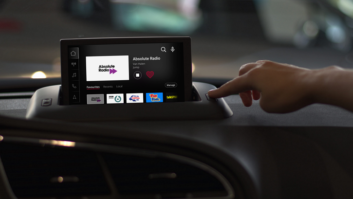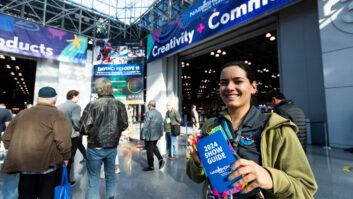Legend has it that Todd Storz, owner of KOWH(AM) in Omaha, Neb., in the 1950s, observed an odd phenomenon at the neighborhood watering hole. Customers tended to choose the same songs on the jukebox, playing just a handful of the hundreds available, over and over. Stranger still, the waitresses — who endured hours’ worth of repetition during their shifts — also spent their hard-earned tips on the same few songs.

Bridge Ratings President Dave Van Dyke
Not only did this supposedly give Storz the idea for Top 40 radio, it’s safe to say that alcohol was present at what amounted to the format’s first “music meeting.”
Since then, music meetings attended by the programming leadership team have determined weekly playlist changes at contemporary hits, urban, rock, country stations — any format that includes new music. But until recently, program directors had very little more information than Storz did to support their decisions.
Callout research became the music meeting’s first widely-adopted enhancement in the 1980s, and it’s still considered vital today by those who can afford it. “Great callout” causes power rotation, while “poor callout” is blamed for dropping a song, even (record representatives often claim) before it’s been given enough exposure to garner a fair test. Also upsetting to record labels, a hit song’s lack of “Tired Of” or “Burn” scores can justify keeping it in high rotation longer — preventing a timely shift in emphasis to the follow-up single.
According to Jacobs Media consultant Mike Stern, “Long after their life on the chart has ended, listeners still want to hear their favorite songs.”

Jacobs Media consultant Mike Stern participates in a music meeting via conference call.
CHANGING METHODOLOGY
New data sources that track streaming music consumption sometimes undermine music business objectives, also.
“While the song ‘Believer’ by Imagine Dragons was still climbing the chart, their song ‘Thunder’ was a top-streaming record in many markets,” says Stern.
Although sympathetic to the goals of the artists and their managers, Stern advises programmers that exposing songs on the radio that their audiences are listening to online — whether or not they’re label-approved singles — “proves stations are in touch with music and how listeners are consuming it.”
Bridge Ratings President Dave Van Dyke points to the top of the urban format chart for another example. “Rockstar” by Post Malone is #1, but most stations are not playing “I Fall Apart” by the rapper, a song that their audiences are choosing to stream online.
“Radio cannot handle the volume of today’s hit music by core artists. Programmers don’t seem to know how to mechanically expose so much new music,” Van Dyke says.

Nielsen Music Director of Radio Haley Jones, right, shown attending the Radio Show with Becky Bennett, Westwood One director of partner relations.
Nielsen Music Director of Radio Haley Jones explains: “Our listeners are platform agnostic,” and they’re receiving audio content — and music — from many sources.
That’s why Jones says Billboard (no longer owned by Nielsen)s decided to revise the Hot 100 to include streaming data in its calculations of chart positions, and Nielsen BDS now includes national and local streaming data columns in its airplay charts. But a song doesn’t have to be new to register a big increase in streaming. The latest installment in the “Guardians of the Galaxy” movie franchise created new interest in ELO’s “Mr. Blue Sky,” a song first released in 1977, and Nielsen’s streaming data measured it.
Van Dyke has created a variation of streaming reports that is station-specific. His firm first asks a panel about their radio listening preferences, then they monitor that same sample’s streaming data to correlate. Even more important than having the data, he says, “It gives programmers a much bigger perspective, a greater awareness of the audience’s behavior.”
Stern also sees value in the charts from Shazam that show which songs are being searched and identified most using the app.
“It measures listeners’ curiosity,” Stern says. “If they’re hitting the Shazam button, that’s a good indicator of a song’s potential.”
He also works with stations that use M Scores provided by Media Monitors. Those assess each song’s prevention of tune-out among a station’s actual PPM meter holders.
Music and program directors may long for the days when they could simply ask themselves, “Do we like it?” and “Is it charting?” While smart people may differ about which of these new information sources to use, when to use each, and which to put greater stock in, this much is certain: Listeners are consuming music in new ways that give them more control and more options.
As a consequence, the goal of a radio station’s music meeting is shifting, too — from choosing songs for them to reflecting the choices they’re already made.
Dave Beasing is known for bringing fresh ideas and innovative strategies to radio. At press time, he’s programming the final days of LA’s “100.3 The Sound” — after a 9 1/2 year run, the classic rock station has been earmarked for divestiture by Entercom prior to its merger with CBS Radio.







